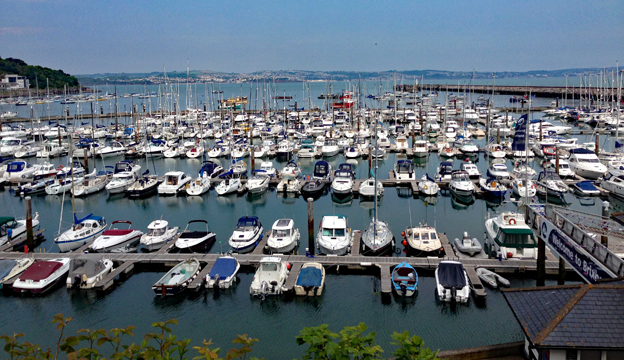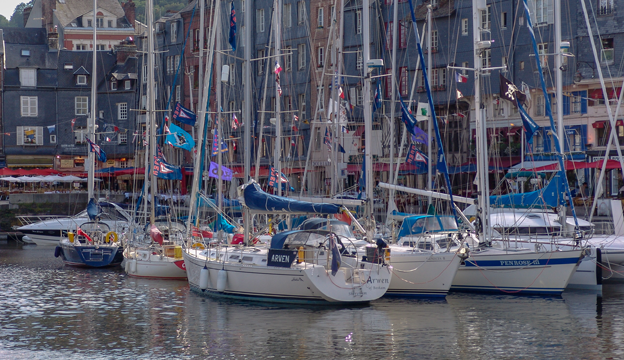Departure and Arrival in UK and EU
By CA RATS
Procedures for Reporting Departure and Arrival in UK and EU
The UK is now a Third Country with respect to the EU and procedures for vessels sailing between the UK and all of the EU and Schengen countries have changed.
The following is based on our current understanding of regulations of both the UK government and EU and Schengen countries.
BUT please note that the regulations for arrival in and departure from Northern Ireland are different to the rest of the UK. Also, (the Republic of) Ireland continues to be within the Common Travel Area and the rules for travelling to and from there are not the same as for the rest of the EU or other Schengen countries. Please see the Ireland Country Page for further details.
Jump to content
Reporting Departure from and Arrival to the UK
All voyages which start or finish in Great Britain (GB) or Northern Ireland (NI) except those between GB, NI and the Isle of Man must now be reported to Border Force. Outbound voyages must be reported before departure from the UK and inbound voyages before departure for the UK.
Reporting is relatively straightforward and is best done on-line via the submit a Pleasure Craft Report (sPCR) online facility. This requires that an account be set up but this allows details of the boat and regular crew to be stored for multiple use. Once set up it is relatively straightforward to create and submit a “Voyage Plan”.
The CA has been liaising with Border Force for a number of years on this project. More recently Border force has had regular liaison meetings with the CA, RYA, RORC etc. with a view to ensuring that the system fits the needs of Cruising Sailors. The version being made available is largely straightforward but there are a few issues which might derail first attempts to use the system.
The first thing that you will need to do is register for the service – you only need to do this once so why not do it from home?

Brixham Marina - Bob Garrett
Once you have competed entering all your data you will be sent an Activation Link by email. You must click this link to complete your registration before using the system.
Once registered you can then get on and enter your data.
The web app is ‘responsive’, i.e. it displays in the form which most suits the screen of the device being used. In the case of a mobile phone, the thing to look out for is the small ‘Menu’ in the top right-hand corner.
If this is the first time you have used the app. It will start with ‘Add Information to Your Account’.
All stored data may be saved and subsequently accessed and changed (or cancelled or deleted) if necessary.
It will start with boat details and then go on to the skipper’s details including passport details. Finally, you will be given the opportunity to enter details of people you sail with.
Before you start you should get together all your boat’s information:
- Registration Number
- MMSI
- Callsign
Now simply enter the data as requested. One oddity is that you will be asked if your vessel has AIS – this relates to an AIS transponder not just a receiver. If you do have AIS you will be asked for the “AIS number” – which doesn’t really exist – what you need to enter here is your MMSI. Hopefully later releases will be clever enough to only ask for the MMSI once.
After you have finished entering the data you can save the information. If you have more than one boat you can enter more vessels.
Now you can enter the people (crew) data. For this you will need the standard information required for Advance Passenger Information – Full Name, Date and place of birth, Passport (or other travel document), Passport number, issuing state, nationality and passport expiry date. Now save the person.
You can add more people now.
Here you will be asked for your departure location and time, arrival location and time, to select your crew from those you have entered, and provide a name, address and telephone number for the skipper. You will also be asked if any of the crew are paid hands.
The instructions in July 2023 are to submit the report at least 2 hours before you depart but not more than 24 hours. Instructions are included in the links below of the steps required if you are unable to report within this time frame or your plans change.
Border Force stress that the web app. is not the final version and some changes are likely to be made in the light of experience to make it more convenient for both Users and Border Force.
Latest guidance on GOV.UK
For the present the e-C1331 now renamed Pleasure craft on non-UK voyages: leaving or arriving in the UK (pleasure craft report (sPCR) fallback template) email submission will remain a valid means of submission (as will submission by post of the C1331 form) but submission via the web app will be the preferred option.
The instructions on the government website are a little confusing and in particular:
For journeys that you must report, you must fly the yellow ‘Q’ flag as soon as you enter UK waters (the 12-mile limit). Make sure the flag can easily be seen and do not take it down until you’ve finished reporting to customs authorities. If you do not comply you will be liable to a penalty."
Quite a number of members have reported that they make their submission, receive a confirmatory email and then hear nothing more.
The CA has queried this with Border Force and they have confirmed that you should receive clearance via email, text or phone within the 2 hour arrival window that you have provided. If this does NOT happen then you should telephone the local Border Force operations, covering your arrival location, for clearance to haul down your "Q" flag and to leave the vessel.

Honfleur Basin - Bob Garrett
National Yachtline
For C1331 Submissions only
Telephone: 0300 123 2012
Opening times: 24 hours a day, 7 days a week
HMRC Notice 8 (replacement) gives details of the documentation and requirements to declare goods purchased outside the UK or changes to the vessel which may be liable for VAT.
Reporting Arrival in and Departure from the EU
General points
UK citizens are now Third Country Nationals
- This means registering arrival in and departure from the EU via immigration officials.
- Following customs clearance procedures.
- It is anticipated that, during 2024, electronic reporting of entry to the Schengen area by non-EU crew members via the new electronic entry scheme EES and online application for a visa waiver(ETIAS) and will be required.
- For all UK passport holders, be aware of the Schengen requirement that the minimum validity period of passports is 3 months AFTER the intended date of leaving the Schengen area. Also, all EU countries calculate the expiry date as 10 years from the date of issue, irrespective of the expiry date printed on the passport.
- Nationals of countries outside the EU or Schengen countries are not permitted to spend more than 90 days out of 180 days (counted on a rolling basis) in the Schengen area without a visa. Some nationalities (not UK) must apply for a visa for any length of stay. All passports should be stamped by border authorities on entry to and exit from the Schengen area.
- Specific details for individual countries are being set out on the webpages for each country, giving our best knowledge of the regulations and requirements.
On arrival in the EU
- The situation when entering Ireland is different because it falls within the Common Travel Area.
- Q flag should be flown on entering EU territorial waters (from 12 miles offshore). The exception to this is that Q should ONLY be flown if entering France with goods to declare.
- Private yachts should report their arrival to border authorities, in most cases this can only be done at designated ports of entry although it may be that different procedures are presently being used in different countries. Please refer to our country pages for more detailed current information.
- Arrival in any Schengen Country will effectively "start the clock" in terms of the Schengen 90/180 day rule and If at all possible passports for yacht crew should be stamped (as is occurs for entry via Airports/ Ferry terminals). It is expected that a Schengen crew list will need to be completed.(Schengen Countries comprise most EU Countries [but NOT Bulgaria, Ireland, Romania] plus Iceland, Lichtenstein, Norway, Switzerland.)
- Ensure you have good records to show that either the vessel has the status of EU VAT paid or the vessel has arrived from outside the EU and is eligible for Temporary Admission.
On departure from EU (or non-EU Schengen country)
- Once a passport has been stamped and arrival has been recorded it is very important to avoid the appearance of an overstay. Failing to check out from the system on departure is likely to have this effect and hence you should ensure that departure from the Schengen Area, if appropriate, is officially recorded (ie. your passport stamped on departure).
- Failure to record departure has reportedly caused significant problems for other Third Country Nationals.
- Clear records should also be kept to demonstrate that the vessel has left the EU, eg: records of customs clearance into the next non-EU destination.
Suggested list of documents which should be available for inspection on arrival
- Vessel registration certificate
- Certificate of Ownership including VAT status
- RCD certificate or exemption evidence
- Ship's Radio Licence (including reference to portable VHF, RADAR, AIS, EPIRB, PLB, ATIS etc. where fitted)
- Certificate of Competence (Operator's) eg. ICC and CEVNI for inland waterways (other than Netherlands if less than 15m in length).
- Vessel insurance particularly third party
- Certificate for radiotelephony
- Ship's Log book
- Record of fuel purchase invoices for the last 12 months and earlier ones if possible
- Passports for all crew and visas if necessary
- Consider also:
- RCD certificate or exemption evidence
- Travel and health insurance
- Life raft test certificate (life raft and flares must all be in date)
The Regulatory & Technical Services group (RATS) is an executive committee of the Cruising Association (CA) made up of CA volunteers. RATS gives advice and assistance to CA members and others on a voluntary basis but this is subject to the following Disclaimer and should not be regarded as a substitute for appropriate professional advice.
Disclaimer: Any advice has been prepared voluntarily by the Cruising Association, its members and others and they and it have tried to ensure that the contents are accurate. However, the Cruising Association, its employees, contributors and relevant members shall not be liable for any loss, damage or inconvenience of any kind howsoever arising in connection with the use of and/or reliance on such advice, save to the extent required by applicable law.
See also